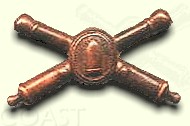Corregidor
Island,
July 18, 1908,
Major G. P.
Howell,
District Engineer in Manila.
Dear Sir,
In
connection with Mr. E. B. Thomson's report relative to the construction of
an artificial island just south of El Fraile, I beg to submit the following
plan as an alternative, which I believe would prove vastly cheaper and no
less effective.*Reprinted from the Military Engineer by permission.
PROPOSED
FORTIFICATIONS
El Fraile Manila Bay
From a
glance at the print entitled 'Entrance to Manila Bay, approximate distances
from El Fraile' the following facts are apparent.
1st. That
the channel north of Corregidor Island can be so well defended by open
batteries on Corregidor as to force any attempt at entrance by a hostile
fleet to be made through the wide channel to the south.
2d. That a
battleship passing between Corregidor and Carabao Islands will of necessity
come within effective range of one or the other, but no ship would attempt
to make the entrance by daylight.
3d. That the
distance between Corregidor and Carabao is too great for batteries on these
islands to prevent the entrance of hostile ships at night.
We may
therefore conclude that it is necessary to mount heavy guns at some
intermediate point. The problem is thus reduced to one of two alternatives:
to build an artificial island, or place guns upon El Fraile.
I strongly
recommend the latter course and submit herewith three copies of a print
entitled 'Proposed Fortifications, El Fraile Island, Manila Bay, P. I.’
The plans
and sections are drawn to a very small scale and no attempt is made to show
details. It is merely desired to set forth something in tangible form,
subject to such modifications as further study and investigation may
indicate desirable. The features contemplated are briefly as follows:
Armament:
Four 12-inch
guns on Navy carriages in two two-gun mushroom turrets of cast nickel-steel
from 21 to 24 inches thick on the sides and tapering to a thickness of 8 to
10 inches on top; these two turrets to be mounted on a concrete structure
containing rooms for personnel, ammunition power, etc.
Protection of ammunition, etc.:
Horizontal,
30 feet of concrete.
Vertical, 10
feet of concrete.
Ammunition storage:
200 rounds
per gun.
Power:
The power to
be supplied by gasoline driven generators of total capacity about 350 K.W.
sufficient for lighting, including searchlights and for driving the motors
for traversing the turrets, elevating the guns, running ammunition hoists
(Navy type), operating the telescopic rammers, air compressors, ventilating
fans, pumps, and cooking stoves.
Interior Economy:
The
structure is divided into two stories and each story into several rooms and
passages by reinforced concrete floors and partitions."The first floor
contains the magazines, power rooms, machine shop, storage battery and
storage rooms for water and gasoline. To protect against accidents from
gasoline fumes the magazines are completely cut off from the power rooms by
a concrete wall. The magazines are accessible by ladder through the turret
wells, the other rooms through the machinery well; ammunition is brought
into the magazines by means of a chain hoist in the ammunition well.
The second
floor contains the plotting rooms, office, guardroom, storerooms,
lavatories, officer’s quarters, and quarters, mess room, and kitchen for a
complement of 120enlisted men. There is access to the turrets and to the
lower floor by means of ladders and to the top of the fort by two stairways.
During the
times of peace the garrison would live on Corregidor and go to El Fraile
only for drills, a guard being maintained at all times and living in a shack
on top of the Fort. During war the island should be regularly garrisoned,
the troops living in tents on top of the fort except during action or storm,
when they should be quartered below.
Water
Supply:
The main
water storage is on the lower floor and from here water is pumped as needed
into a small tank on top. It is probable that an artesian well could be
drilled giving an ample supply for all needs. A small distilling plant
should be provided.
Ammunition Service:
Projectiles
are carried to the handling room beneath the turret by overhead trolley. The
cartridges arc shoved through a small trap door to prevent any explosion in
the turret or handling room from entering the cartridge rooms. From the
handling room the charge is raised to the breech of the gun bemeans of the
standard type of Navy ammunition hoists, and is rammed by the Navy
telescopic rammer.
Range
Finding and Fire Control:
An observing
station of cast nickel steel is placed between the turrets with the
observing slot at sufficient elevation to see over both turrets. The top or
roof of the station is supported by steel plates radial to the axis of the
observing instrument. This station should be made as small as possible so as
to minimize the effect of the blast. This station might be made oblong in
plan so as to accommodate two depression instruments and cover both channels
at once.
To prevent
the gun captains from losing their targets it would be advisable to furnish
them with both range and azimuth from the B. C. Station.
Note: The
present plan for torpedo defense may be carried out by placing observing
stations on top between the B. C. Station and the turrets and the casemate
apparatus located on the 1st and2d floors. This is in part shown.
It is not
possible without further data to make even an approximate estimate of the
total cost. The concrete would amount to about 1,000 cu. yds. more per gun
than in our open batteries or in all about 26,000 cu. yds. which at cost of
$12 per yard would amount to $312,000.
The armor
being cast nickel steel because economy of weight is not necessary would be
much less expensive than the same protection on shipboard when steel
forgings must be used.
Roughly we
might estimate the total cost at $1,000,000 or$250,000 per gun in all
respects complete.
Note: I deem
it not only desirable but imperative that whatever plan be adopted it should
contemplate both all around fire and protection.
Very respectfully,
JOHN J.
KINGMAN,
1st Lieut.,
Corps of Engineers/'




